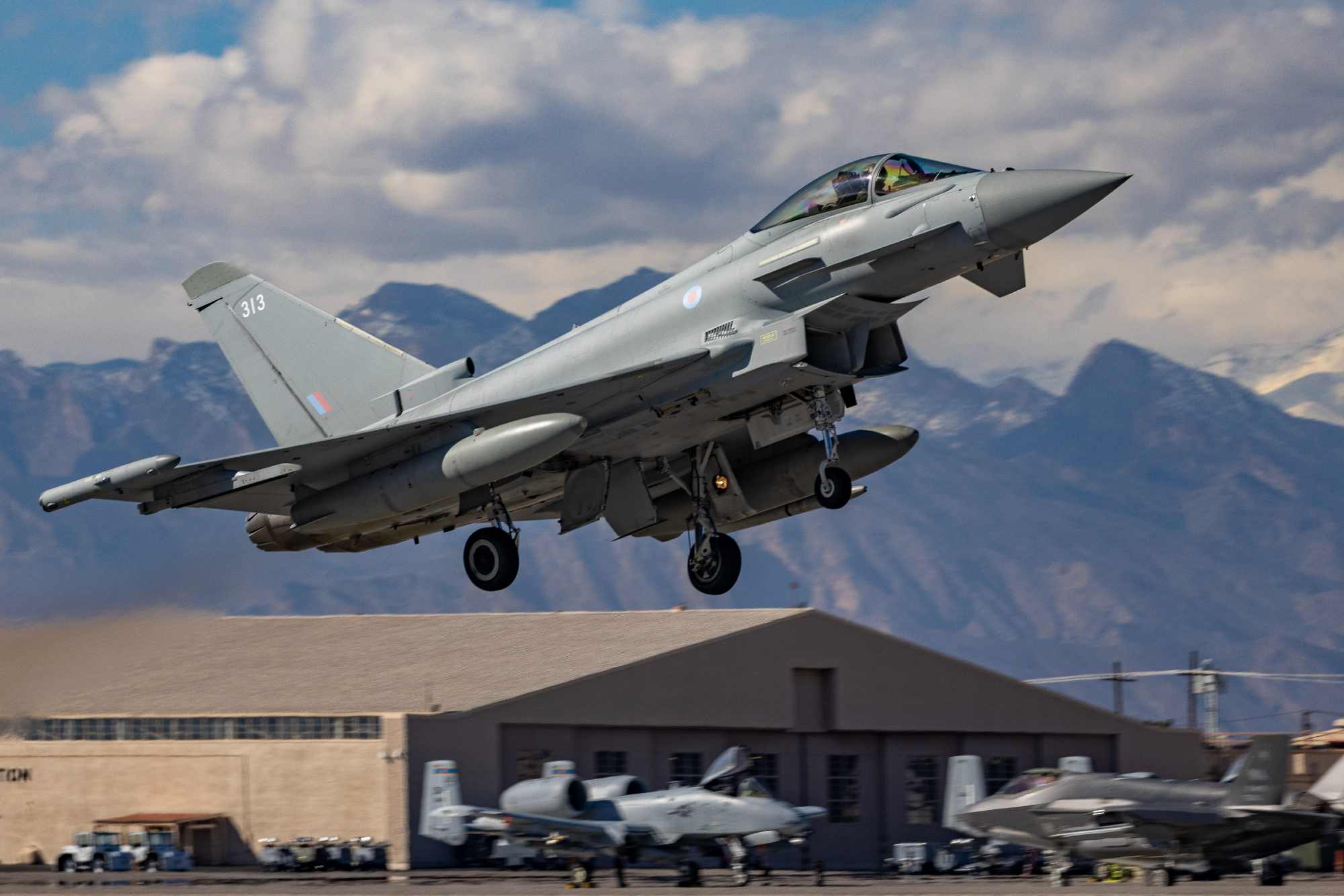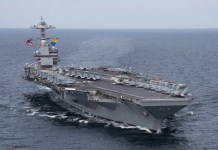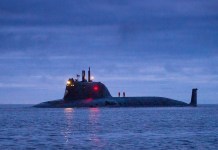American, British, and Australian fighters recently conducted joint air drills over Nevada as a part of the Red Flag exercises, practicing combat against China’s People’s Liberation Army Air Force (PLAAF) fighters and air defenses.
The series of strategic military engagements between Japan, Taiwan, and the United States, with secondary participation from London and Canberra over the last year, suggests Washington is preparing for a clash with China to make up for the loss of face over Ukraine and Afghanistan.
The two episodes mark a period of disillusionment among many of its partner countries with the unreliability of America as an ally, which is unlikely to come to your defense.
Royal Air Force’s (RAF) Eurofighter Typhoons and the Royal Australian Air Force (RAAF) EA-18G Growlers participated in the exercises.
The publicity material also saw US Marine units that included A-10 Warthog ground attack aircraft and F-35B Lightning II. Other USAF assets included B-2 Spirit bombers, E-3 Sentry Airborne Warning and Control Systems (AWACS), F-15, F-16, F-22 Raptors, and F-18s.
Long-Distance Strikes & Interoperability
While USAF Colonel Jared J Hutchinson, commander of the 414th Combat Training Squadron that runs Red Flag, maintained that the maneuvers were not directed at any country, recent geopolitical events and the shooting down of the Chinese weather balloon indicate that the target is the Chinese military.
The nature and pattern of the missions and roles practiced in the three-week-long drills leave a lot of clues on how the US is attempting to overturn its disadvantages in the western Pacific before a well-entrenched and well-armed China, that has regularly been practicing a massive combined arms strike on Taiwan.
“(China is) just the pacing challenge that we train to so that we’re ready…We think that if we’re ready for China, we’re ready for anybody,” Hutchinson was quoted in a Reuters report.
An RAF detachment is honing its air combat skills in the largest-scale Exercise Red Flag to date.
The @usairforce has expanded the geographical area of the exercise to challenge participants in addition to traditional combat air missions.
Full story: https://t.co/mDMtzfgXot pic.twitter.com/7m4zhE5nAl
— Royal Air Force (@RoyalAirForce) February 9, 2023
The scenario expected is a Taiwan contingency where China would likely run into US resistance, which has committed to back Taipei in the event of a Chinese attack.
While promoting peaceful reunification, China has never renounced military force in the event Taiwan declares independence or a powerful nation recognizes it as a sovereign nation.
The Royal Air Force’s (RAF) KC-2 Voyager refueling tanker aircraft provided mid-air refueling to the American fighters, showing the air forces are practicing long-range strikes to adjust to the “tyranny of distance” inherent in the western Pacific theater.
A statement from the UK RAF quoted the phrase used by the US military to describe fighting in the western Pacific. The statement added that training areas in Utah, California, and the California Pacific Coast had been added to the existing 12,000 miles of airspace and 2.9 million acres of land available for the exercise.
Another refined area is interoperability among the three air forces that aid in conducting missions with each other’s assets (fighters, ground radar controllers, Airborne Early Warning aircraft, and refueling tankers).
Own forces won’t always be available, and allies often work towards implementing some common operating systems and procedures for successfully conducting missions.
The extent of interoperability now encompasses even the crew-level cross-training on each other’s platforms. The MoD mentions RAF aircrew being integrated into a USAF RC-135 Rivet electronic warfare and ISR aircraft.
“As part of the exercise, the pilots and aircrew will face simulated ground-based air defense systems, as well as aggressor aircraft that will simulate a peer adversary, together with cyber and space-based threats as combat missions are planned, conducted and debriefed,” the MoD statement added.
Hit China On Home Front
Air Commodore John Lyle, the RAF’s Air Mobility Force commander, said the drills would simulate bringing the air forces into “an area where there has been an invasion by a hostile country.”
“So our role will be to support the force to proceed into the area that’s been occupied effectively and to undertake targeting of key assets to allow us to degrade the enemy’s capabilities,” Lyle said, without mentioning China by name or identifying what simulated area had been invaded.

This stunningly implies that support is also envisaged for Taiwan after China occupied it. Given the pressure of deterrence and de-escalation after a military invasion, one would expect the US and its allies to assist Taiwan while a Chinese military attack is underway.
Lyle’s framing suggests they would also try to liberate Taiwan after China occupied it. Trying to displace an occupying technologically advanced peer rival with a professionally trained military, is stupefying and bares the extent to which the US is willing to win its geopolitical rivalry with China.
With the knowledge that it lags in many doctrines, logistical and military areas of a war with China, as has been repeatedly admitted by its military leadership and analysts, it perceives the only way to win is by taking an outright offensive to China’s home front.
The plan to use hypersonic and multiple warhead-armed ballistic missiles from Japanese islands to strike China’s anti-access/area denial (A2/AD) sites, is a step in this direction.
‘We Are Reliable Because We Can Still Fight’
A war away from China’s shores on the high seas and the air is an inevitable failure, with that decision itself being constrained by ‘deterrence’ that prevents conflicts between superpowers.
Therefore, the emerging thinking in the US leadership appears to want to save face over the massive defeat in Ukraine by being unbounded by any considerations of avoiding conflict with another capable military. It is to demonstrate to the rest of the developing world that it pursues its stated geopolitical goals.
It perceives the absence of support from the developing world for its proxy war against Russia and its refusal to criticize Moscow for its military intervention not as a general weariness over its geopolitical rivalries but as a reaction to its withdrawal from Afghanistan and failure to back Ukraine with direct participation.
That a significant proportion of the disaffection also stems from its inability to address many of the world’s burning issues like poverty, trade, commerce, and industry, and now a pandemic is lost.
- The author can be reached at satamp@gmail.com
- Follow EurAsian Times on Google News




